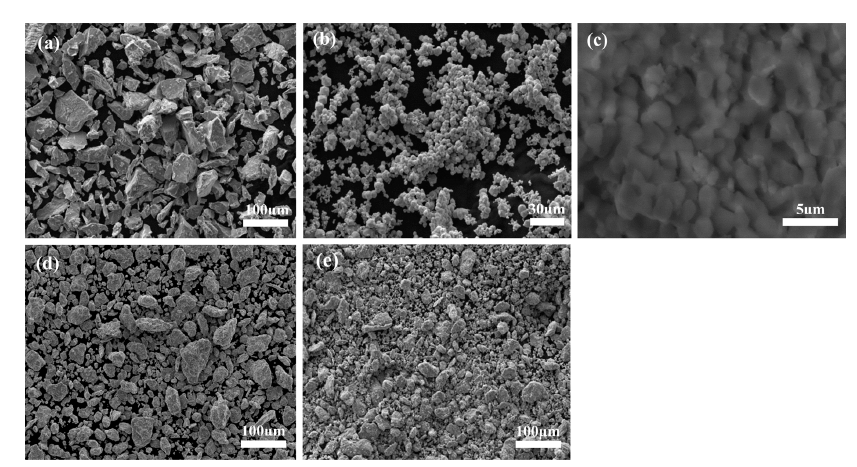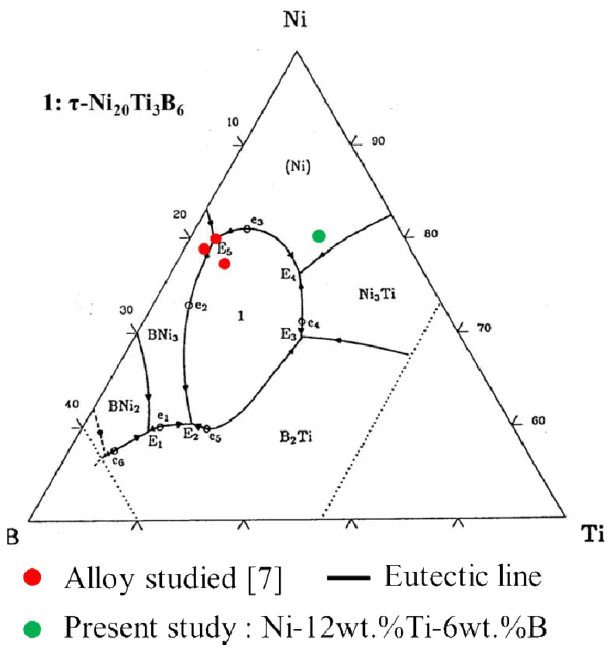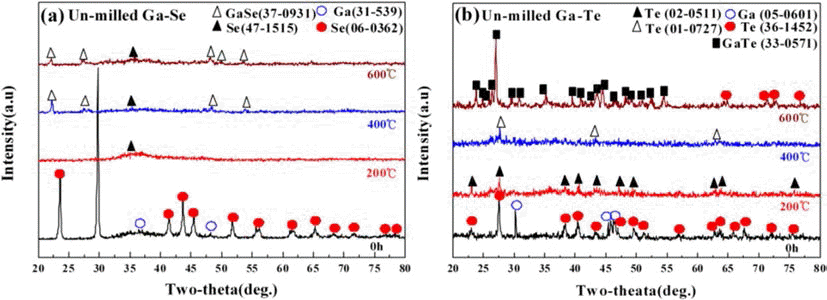Search
- Page Path
- HOME > Search
- [Korean]
- Microstructures and Mechanical Properties of Ti-20Mo-0.5EB Composites
- Suhyun Bae, Wonki Jeong, Se-Eun Shin
- J Korean Powder Metall Inst. 2021;28(5):403-409. Published online October 1, 2021
- DOI: https://doi.org/10.4150/KPMI.2021.28.5.403

- 545 View
- 8 Download
-
 Abstract
Abstract
 PDF
PDF In this study, Ti-Mo-EB composites are prepared by ball milling and spark plasma sintering (SPS) to obtain a low elastic modulus and high strength and to evaluate the microstructure and mechanical properties as a function of the process conditions. As the milling time and sintering temperature increased, Mo, as a β-Ti stabilizing element, diffused, and the microstructure of β-Ti increased. In addition, the size of the observed phase was small, so the modulus and hardness of α-Ti and β-Ti were measured using nanoindentation equipment. In both phases, as the milling time and sintering temperature increased, the modulus of elasticity decreased, and the hardness increased. After 12 h of milling, the specimen sintered at 1000°C showed the lowest values of modulus of elasticity of 117.52 and 101.46 GPa for α-Ti and β-Ti, respectively, confirming that the values are lower compared to the that in previously reported studies.
- [English]
- A Study on Synthesis of Ni-Ti-B Alloy by Mechanical Alloying from Elemental Component Powder
- Jung Geun Kim, Yong Ho Park
- J Korean Powder Metall Inst. 2016;23(3):202-206. Published online June 1, 2016
- DOI: https://doi.org/10.4150/KPMI.2016.23.3.202

- 1,083 View
- 3 Download
- 2 Citations
-
 Abstract
Abstract
 PDF
PDF A Ni-Ti-B alloy powder prepared by mechanical alloying (MA) of individual Ni, Ti, and B components is examined with the aim of elucidating the phase transitions and crystallization during heat treatment. Ti and B atoms penetrating into the Ni lattice result in a Ni (Ti, B) solid solution and an amorphous phase. Differential thermal analysis (DTA) reveals peaks related to the decomposition of the metastable Ni (Ti, B) solid solution and the separation of equilibrium Ni3Ti, TiB2, and τ-Ni20Ti3B6 phases. The exothermal effects in the DTA curves move to lower temperatures with increasing milling time. The formation of a TiB2 phase by annealing indicates that the mechanochemical reaction of the Ni-Ti-B alloy does not comply with the alloy composition in the ternary phase diagram, and Ti-B bonds are found to be more preferable than Ni-B bonds.
-
Citations
Citations to this article as recorded by- Solid‐State Synthesis and Characterization of the Stable Nanostructured Ni21Ti2B6 Phase
Tuncay Simsek, Baris Avar, Sadan Ozcan, Arun K. Chattopadhyay, Bora Kalkan
physica status solidi (b).2021;[Epub] CrossRef - Synthesis and analysis of nanocrystalline β1-Cu3Al and β2-NiAl intermetallic-reinforced aluminum matrix composite by high energy ball milling
Hong-Hai Nguyen, Minh-Thuyet Nguyen, Won Joo Kim, Jin-Chun Kim
Metals and Materials International.2017; 23(1): 202. CrossRef
- Solid‐State Synthesis and Characterization of the Stable Nanostructured Ni21Ti2B6 Phase
- [Korean]
- Mechanical Alloying of GaSe and GaTe Systems
- Jung Bo Choi, Jung-Ho Ahn
- J Korean Powder Metall Inst. 2014;21(5):338-342. Published online October 1, 2014
- DOI: https://doi.org/10.4150/KPMI.2014.21.5.338

- 552 View
- 0 Download
- 1 Citations
-
 Abstract
Abstract
 PDF
PDF In the present work, we investigated the mechanical alloying of binary Ga-Se(1:1) and Ga-Te(1;1) sysyems. The high-energy ball-milling was performed at 40°C where one of constituents (Ga) is molten state. The purpose of the work was to see whether reactions between constituent elements are accelerated by the presence of a liquid phase. During the ball-milling, the liquid Ga phase completely disappeared and the resulting powders consist of nanocrystalline grain of ~20 nm with partly amorphized phases. However, no intermetallic compounds formed in spite of the presence of the liquid phases which has much higher diffusivity than solid constituents. By subsequent heat-treatments, the inter-metallic compounds such as GaSe and GaTe formed at relatively low temperatures. The formation temperature of theses compound was much lower than those predicted by equilibrium phase diagram. The comparison of the ball-milled powders with un-milled ones indicated that the easy formation of intermetallic compound or allying occurs at low temperatures.
-
Citations
Citations to this article as recorded by- A Study on Synthesis of Ni-Ti-B Alloy by Mechanical Alloying from Elemental Component Powder
Jung Geun Kim, Yong Ho Park
Journal of Korean Powder Metallurgy Institute.2016; 23(3): 202. CrossRef
- A Study on Synthesis of Ni-Ti-B Alloy by Mechanical Alloying from Elemental Component Powder
TOP
 KPMI
KPMI


 First
First Prev
Prev


